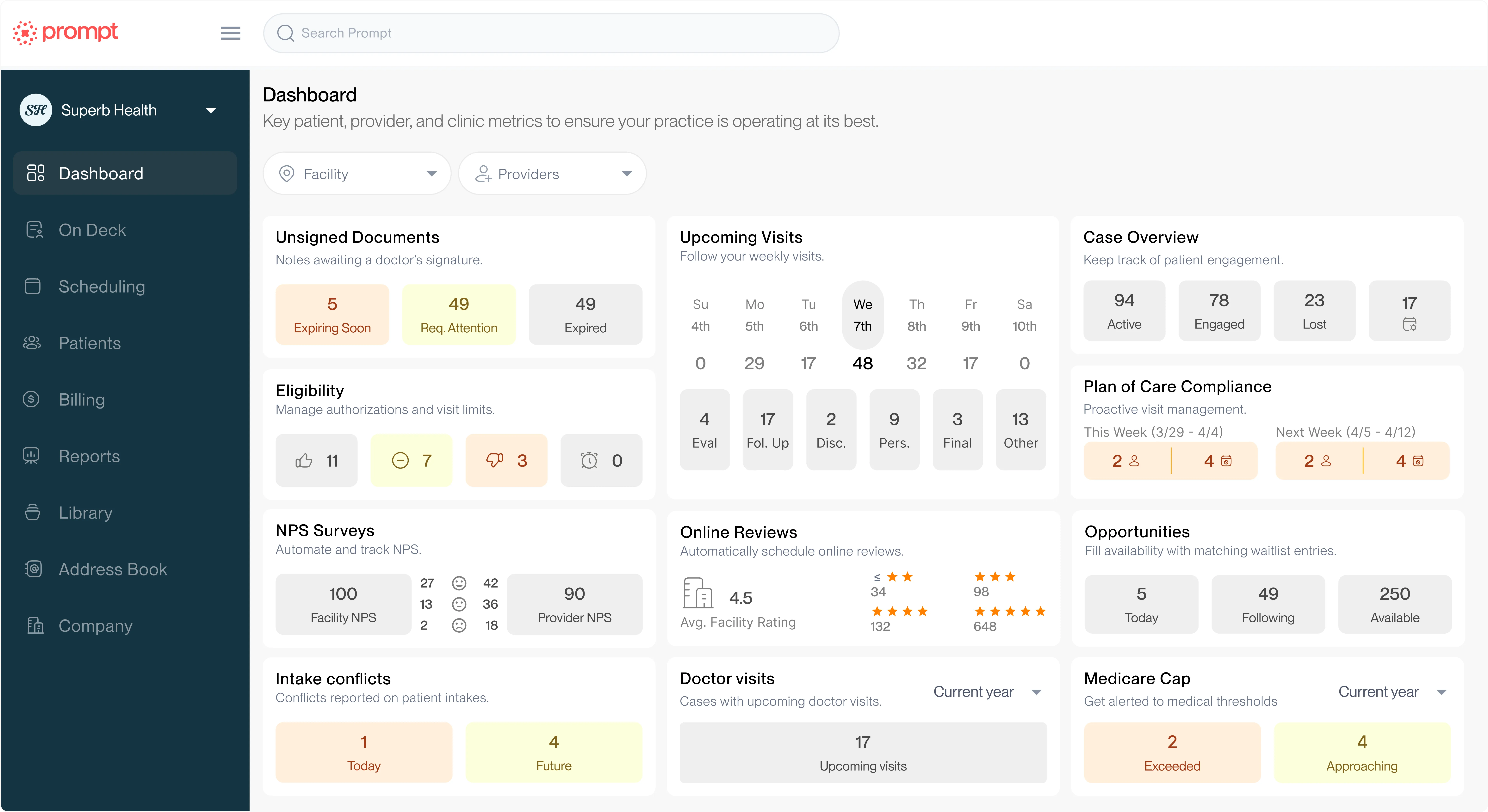See Prompt in action!


The success of a physical therapy clinic depends on its people. A team that trusts each other, communicates well, and shares goals can transform not only patient outcomes but the entire business.
Strong clinic culture doesn’t happen by accident. It’s built through structure, communication, and leadership that makes everyone feel valued and supported. But just as there are signs of a thriving team, there are also some indicators that your clinic might need some attention.
Here are 6 common signals that your clinic culture may be drifting off course, and what you can do to address them before they become bigger problems.
Every person in the clinic has an important role, but teamwork only happens when those roles connect and communicate. Clearly defined responsibilities, paired with structured communication, help everyone understand how their work supports the larger mission.
If collaboration feels inconsistent in your clinic, take a closer look at the clarity you’re providing. Do employees know how their tasks impact others? Are processes easy to follow and impactful? Small improvements in structure often make it easier for teams to work together, share ideas, and deliver better patient care.
It’s natural for sub-teams to form; clinicians work closely with clinic support staff, and front desk and administrative roles build their own rhythm. But when small groups stop communicating across roles, misunderstanding and friction may follow.
Reinforce unity in your clinic by reminding your team that everyone contributes to the same mission. Encourage job shadowing or knowledge sharing so that staff understand what their coworkers handle each day. A little perspective can go a long way in building empathy and breaking down “us vs. them” thinking.
When mistakes happen, how your team responds often matters more than the mistake itself. A pattern of finger-pointing or defensiveness often points to fear in your clinic; fear of blame, or of being seen as underperforming.
Leaders set the tone. When owners model accountability and treat mistakes as opportunities to learn rather than chances to point blame, it creates a safe space for others to do the same. Over time, this builds trust and transforms accountability from something to avoid into something to value.
Meetings should be a time to energize and align your team, not drain them. If only a few people engage in discussions or if others seem unengaged, it might be a sign that employees don’t feel heard or don’t see meetings as meaningful.
Make meetings more collaborative and impactful, or use that time for something else in the clinic. Break into small groups to tackle projects that have been left unattended, or use this time for the knowledge sharing mentioned above. Productive meetings help teams feel seen, connected, and invested in the clinic’s direction.
When a few therapists carry most of the workload, it can be a sign of deeper imbalance, unclear expectations, uneven communication, or even burnout.
Regularly review patient load distribution and listen to how your team feels about it. Clarify roles, set shared goals, and delegate where possible. When workloads feel fair, teams naturally become more supportive and productive.
If daily operations stall when you’re not in the office, it may mean your systems rely too heavily on individual oversight rather than collective understanding. This is a signal that your team needs more structure and autonomy to function successfully without you.
Invest time in documenting workflows, cross-training team members, and empowering employees to make decisions within clear boundaries. The more confident your team feels handling challenges independently, the more freedom you’ll have to focus on growth.
Clinic culture is about avoiding turnover, but it’s also about creating an environment that people are excited to stay in and help grow.
When employees feel trusted, supported, and equipped to succeed, they become advocates for the practice and for each other.
Addressing clinic culture warning signs early strengthens trust, boosts retention, and ensures your clinic’s success is built on people, not just productivity numbers.
Help your practice grow
From intake to insights, Prompt is the all-in-one platform you need